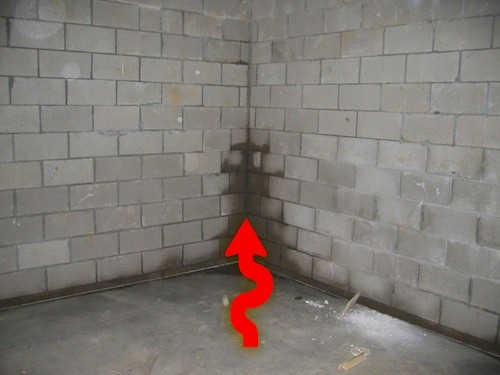It’s magic! Right before your very eyes. Water flow can work against gravity.
Capillary action refers to the ability of water to travel up against the pull of gravity through a porous material. Wood is such material. One common example of this action is water “wicking” up through a paper towel, following the direction of the paper fibers. Although not as serious as bulk water movement, capillary forces are powerful…often moving upwards without the occupant’s knowledge. Over time this action can have a devastating affect on your home.
Dr Joseph Lstiburek addresses capillary action as “suction” in this article titled Capillarity—Small Sacrifices.
Water causes enough trouble by itself, but when we add salt we go to a whole different level, especially where porous materials are concerned. What is the deal with porous materials? Simple, porous materials are capable of wicking water large distances due to capillary suction (1). And when water can move large distances only bad things can happen.
Some of the tiniest pores can be found in wood, concrete, mortar and brick. Guess what we like to build out of? Yup, wood, concrete, mortar and brick. The theoretical limit of capillary rise in concrete is about 10 kilometers—and folks that is not a typo—it really is about 10 kilometers or about 6 miles. Concrete sucks big time. In wood it is about 400 feet—the height limit trees can grow to is set by the size of the capillary pores in wood. Ever wonder how leaves get water? When you go into a forest and listen very carefully you don’t hear any pumps pumping water upwards a couple of hundred feet do you? Capillary suction is powerful stuff. When you add salt to the water the power becomes explosive—literally as we shall see.
In this short video we’ll show how water moves from one container to the next, flowing up and over the glass. Within 2 mins we noticed water beginning to form in the base of the empty glass. Within 7 mins the water level could be seen on the side of the glass and withing 25 mins about 50% of the potential water flow has moved. The water will continue to move until it’s level in each glass.
Even two materials placed closely enough together will provide a channel for capillary action to occur. One common example of this occurs with lapped wood siding. Rain water striking the side of the house will run down the siding to the edge. Capillary forces can then draw the bead of water up and behind the siding, thus wetting the back side of the siding. It’s one of the main reasons metal to maintain a space between siding the roof’s surface. Water will be drawn into, under and behind siding and eventually will lead to rot, mold, mildew and leaks, as seen in the above video.
 See an example of water moving up off the basement floor. Dr Allison Bailes covers this topic very well here: https://www.energyvanguard.com/blog/78016/Introduction-to-the-Physics-of-Water-in-Porous-Materials
See an example of water moving up off the basement floor. Dr Allison Bailes covers this topic very well here: https://www.energyvanguard.com/blog/78016/Introduction-to-the-Physics-of-Water-in-Porous-Materials
See below how this new construction home’s back porch post will soon suffer from water wicking “up into” the post.
That’s a preventable magic act … install the column on an elevated metal post base and seal the wood with a polyurethane sealer during construction.
We Speak House.
Here are a few of our latest posts. Follow me on Instagram.
[fts_instagram instagram_id=227276232 pics_count=4 type=user profile_wrap=no popup=yes super_gallery=yes columns=2 force_columns=no space_between_photos=1px icon_size=65px hide_date_likes_comments=no loadmore=button loadmore_count=4 loadmore_btn_maxwidth=300px loadmore_btn_margin=10px]
- - - - - - - - - - - - - - - - - - - - -